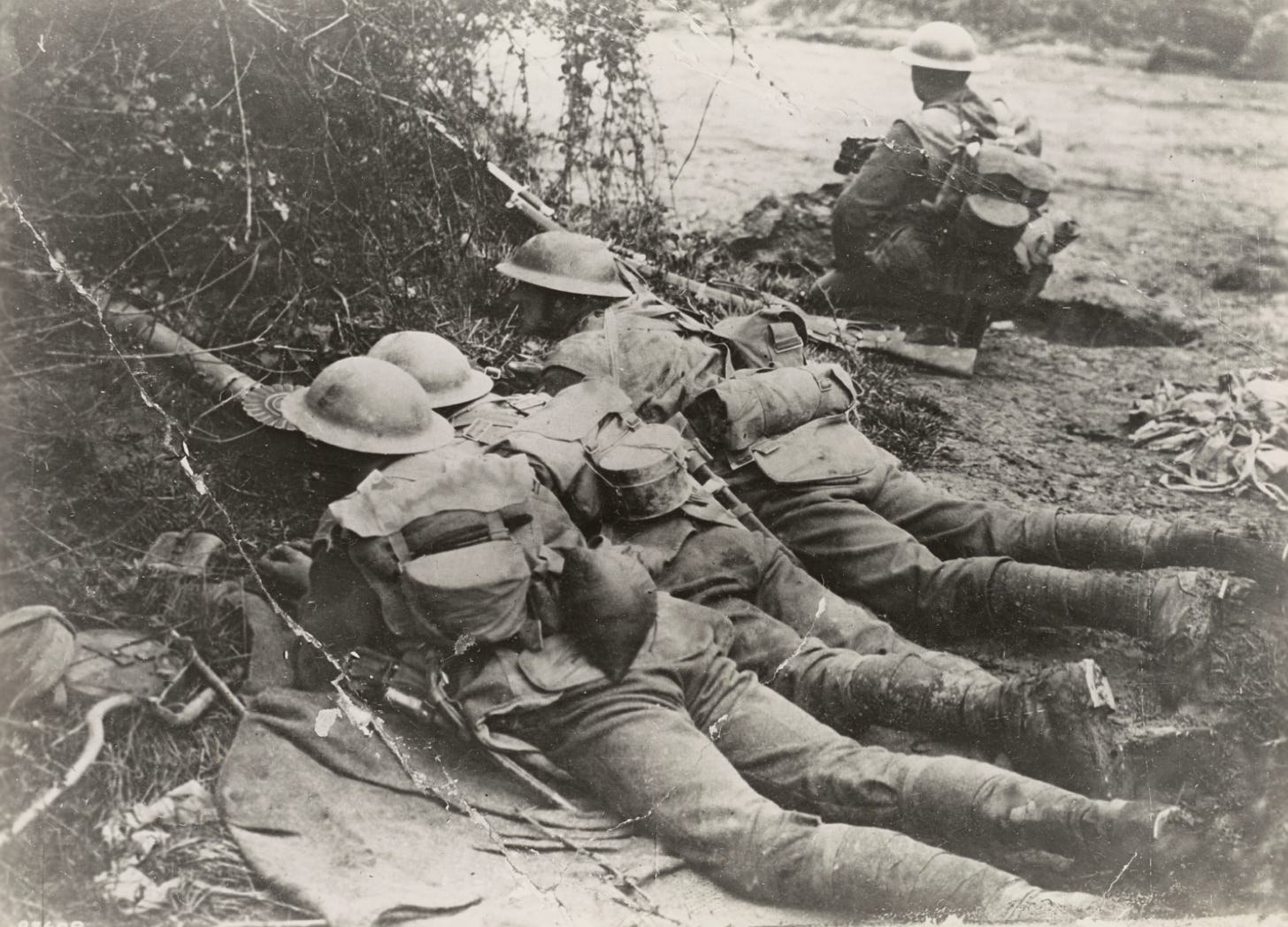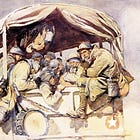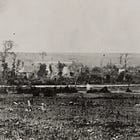Attack upon a Rifle Platoon
An engagement from the spring of 1918
On 10 July 1918, the General Headquarters of the American Expeditionary Forces in France published a pamphlet that contained descriptions, told from the point of view of British participants, of three recent engagements. The following is a verbatim copy of the second of these three reports.1
A platoon commander gave me the following incident, which will also have some underlying features.2 He states that in fighting near ______ his company with his platoon was ordered to occupy a support line and was informed that the first line would fall back through them very shortly, but their orders were to hold the position to which they were assigned to the last man.
The company advanced with three platoons in line and one platoon in support to the indicated position.
Upon arrival, a portion of the old trench was found with wire in front of it. But this trench only accommodated two platoons, and his - the third in the advance line - was obliged to seek shelter behind a nearby hedge, but, fortunately, facing in the proper direction.
In a short while, the troops in advance of his line fell back through his men. They had a number of wounded and had suffered very severe losses.
Shortly afterwards the Germans came in sight, advancing exactly as described in the previous incident, except perhaps for the fact he noticed individual soldiers working well out to the flanks and slightly in advance of the rushes of the light machine guns.
They opened fire with fair effect as the range was only about 500 yards, and, while they could not see the Germans, they knew exactly where they had dropped in the grass. Again, the heavy machine guns upon the right and left opened upon the trench, but the troops - having good protection - continued to fire upon the little groups, evidently with effect, as casualties were observed.
Neither [heavy machine] gun was seen by this officer but he judged by the sound that they were within 800 yards.
These groups were then seen crawling and dodging in such cover as they could find and advance, apparently, ceased with sniping going on on both sides. In a short time - less than an hour, he thinks - a German aeroplane flew over very low and almost directly over their line and returned immediately in the direction from which it came.
There was desultory firing for what he thinks was about an hour and then, almost without warning, a furious bombardment of 77s [77mm field guns] fell directly on the bit of trench occupied by the two other platoons. His platoon received no serious casualties from this fire. He thinks that the [other two] platoons were practically wiped out, as only six men ran over and joined him from the trench.
He has not seen any of the others, officers or men, since then.
The bombardment lifted and the German machine gun and infantry groups advanced boldly at a slow pace.
He [the British platoon commander] opened fire with his Lewis guns and rifles and the fire was, apparently, effective for a few minutes when he was overwhelmed by what he judged to be heavy machine gun fire of great accuracy enfilading his right flank and also fire of the same sort from his left front. His losses were very heavy and his men were unable to stand the fire.
The [German] infantry in front were also firing with their rifle and Lewis guns [that is, light machine guns] and advanced boldly. He [the British platoon commander], with what was left of his platoon, withdrew as rapidly as possible, being unable to save their wounded.
Source: General Headquarters, American Expeditionary Forces ‘Extract: Report of American Officer on Recent Fighting’ (10 July 1918), US National Archives (Archives II), Record Group 127 (Records of the US Marine Corps), Records Relating to US Participation in the World Wars (1916-1945), Box 6 (27 May - 9 July 1918)
Acknowledgement: I would like to thank Michael Miller, late of the archives of the Marine Corps University, for giving me a copy of this document.
Source for Photo: US National Archives
For Further Reading:
To Subscribe, Support, or Share:
For the sake of readability, I have divided the report (which was originally typed as a single block of text) into paragraphs, improved the punctuation, and added explanatory words (which appear within brackets).
In 1918, a British infantry battalion consisted of four identical companies, each of four uniform platoons. Each platoon, in turn, broke down into three rifle sections and one Lewis gun section. (The latter operated two Lewis guns.)








In this case concealment ( the hedge) was better than cover in the trench.
I’m just getting emptier and emptier in my mental battlefield.
I’m also thinking displace when the enemy observation observes you.
I liked this it felt as I was there myself